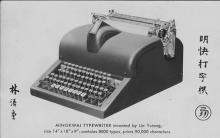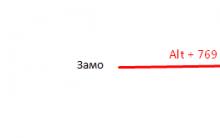All disks are divided into two large groups: alloy wheels and steel wheels.
Steel disks, more precisely, their parts, are stamped from a sheet, and then these parts are joined by welding. It turns out extremely cheaply and of sufficient quality - that is why the vast majority of cars on the factory conveyor are equipped with steel ones. Their advantages include a fairly high strength and the possibility of recovery even in the case of very strong collapse of the rims. The main disadvantages: large weight, low manufacturing accuracy (which means there may be problems with balancing) and outdated design.
Alloy wheels in many respects better than steel ones. They allow any game with design, alloy wheels the highest manufacturing precision, they perfectly remove heat from the brake unit, but the main thing is that they are light (the lighter alloy wheel, the less the total mass of the unsprung parts of the car, and therefore, the better). These are common virtues. Clarified the same to judge the pros and cons alloy wheels it is possible, only taking into account the way and from what kind of alloy they are made - there are many nuances, the wheel is not the wheel.
By manufacturing method alloy wheels are divided into cast and forged. The cast disc has a grainy internal structure of the metal, and this is its main disadvantage: when driving for a long time on potholes in the metal, there is a process of accumulation of microcracks (invisible and therefore dangerous), which sooner or later will manifest themselves - from a strong impact, the disc can crack. Forged, on the other hand, whose metal has a multilayer fibrous structure, is extremely durable; potholes are not afraid of him, he will not crack under any conditions (forging provides the necessary plasticity). It is theoretically possible to crush it, but the suspension is more likely to fly apart than the rim of the forged wheel will be crumpled.
Discs are cast and forged from aluminum and magnesium alloys. If you arrange alloy wheels in order "from minus to plus" in purely technical parameters, the series will be as follows: cast magnesium (light, but capricious, quickly cracks), cast aluminum (normal in terms of the combination of qualities), forged aluminum (strong and light) and forged magnesium ( super strong and lightweight). But when choosing disks, it is clear that not only technical parameters play a role. We advise you to immediately drop the extremes: magnesium wheels, both cast and forged, are very rare, as a rule, they are only made to order for sports cars.
The price of magnesium can go off scale for $ 1000 (piece).
Wheel markings
The rim marking must contain the following: the manufacturer's trademark, date of manufacture (week and year), heat number, allowable static load (kg or lb), stamp of the supervisory authority, separate stamp of X-ray inspection (usually for cast ones) and, of course, standard size. For example, 5.5Jx15H2 ET30 - what does this mean?
5.5 is the width of the rim in inches. Standard row: 3.5; 4.0; 4.5; 5.0; 5.5; 6.0; 6.5 and 7.0 inches; tuning, sports and off-road cars can have wider wheels.
15 - rim mounting diameter in inches. Standard range for passenger cars and SUVs: 10, 12, 13, 14, 15, 16, 17, 18 and 19 inches.
J and H2 are symbols that are more needed by specialists. J encodes information about the design of the rim flanges (can be JJ, JK, K or L). And H2 is the code for the construction of humps - annular protrusions on the rim landing flanges, which serve to securely hold the tubeless tire on the rim (there are many variations: H, FH, AH ...).
ET30 - wheel offset in millimeters. It can be denoted as OFFSET or DEPORT. This is the distance between the longitudinal plane of symmetry of the rim and the mounting (attachment) plane of the wheel (if these planes coincide, the overhang is zero). You cannot take discs with a non-standard offset for your car. Decreasing the overhang (the wheel track becomes wider) can put additional stress on the hub bearings and suspension. With an increased outreach (the track narrows) alloy wheel may stick into the brake assembly. In general, all crash games are a delicate matter. On tuning and sports modifications, it is changed, but this is done in conjunction with a number of other changes.
The diameter of the mounting holes is PCD (Pitch Circle Diameter). For example, PCD100 / 4 means that this diameter is 100 mm, and the number of holes is 4 (this, however, can be seen as well).
Besides, alloy wheel they are selected according to the diameter of the central hole (if you make a minus error, you cannot put the wheel on the car) and according to the peculiarities of the mounting holes: tightening the bolts (nuts) "on a plane", "on a sphere" or "on a cone" - this cannot be mistaken.
Basically, low-cost vehicle configurations are on the so-called stamped disks. But the "rich" configurations are "cast". But why is this happening? It turns out that "stamping" is worse, because they save on it? But casting is better, and much more, because they put on for those who have money? Where is the truth here, what is really better and more reliable, and is there any point in overpaying for "casting", let's figure it out ...
You know, a lot of my readers write to me - that the same make and model of a car costs MUCH more expensive, just because it has alloy wheels, and not "stamping". That the difference in price can go up to 50,000, or even more! Guys, that's not entirely true.
Of course, alloy wheels are more expensive than stamped ones, but the difference here is not so critical, if you take the R14, which is now on a very large number of our cars, then it is approximately 10,000 rubles (for all 4 wheels), no more, if only you have not some "copyright" discs (which on a standard car will be a rarity).

But such a difference of 50,000 rubles, looms due to the larger configuration in many respects, for example - stamped discs were R14, and cast R15, also added (for example) - climate control, cruise control, all windows, heated windshield glass, parking sensors, etc. Of course, such a complete set will be more expensive, but to say that only because of the "casting" is not correct! I think everyone understood this, let's disassemble each of the subspecies.
Stamped discs
At the moment, this is the most widely used disc in the whole world. The reason is as usual trivial, THIS IS THE PRICE. It's no secret that they will cost 2 - 3 times cheaper than their cast brother (with the same parameters).
They are made by stamping metal parts, their two main ones are the "rim" and the so-called "plate". Initially, a plate is made using a special profile to increase rigidity, which is why the “plate” is almost never flat. Then a rim is made, it is also stamped from steel, then they are connected using special welding. That is why they are called "stamped". After this process, the surface is painted with a special corrosion-resistant paint. Actually, this is the whole process, it is often automated as much as possible, so the cost of such a product is really low.

pros :
- Low cost of the final product
- Maintainability. When deformed, it does not crack, but crumples. Can be easily straightened and then applied easily

- The suspension is slightly protected. What's the matter, but the fact is that upon impact, the disk begins to crumple, and as we know from the law of physics, part of the "impact energy" is absorbed, respectively, this destructive effect does not pass further to the suspension element (or passes but in a reduced version). Thus, we can state that these discs "protect" the suspension a little.
- Standard bolts. The thing is that under the "casting", usually you need to use your own bolts, which are more expensive.
There are not many advantages, but as you can see, they really are, if you need a disk for a company car, that is, say, a Gazelle, or some kind of truck, or a bus - STAMPING IS THE PERFECT CANDIDATE. And personally, I have never seen alloy wheels on trucks (expensive and pointless).
Minuses :
- Appearance. What can I say they are really, "miserable" outside.
- Caps. Almost 80% of manufacturers, in order to somehow decorate the "stamping", use decorative caps. They are usually plastic and can be easily lost! So that's the whole absurdity of what - if you lost the ORIGINAL CAP (about market China, I'm not talking about), then the new one will cost about 1000 - 2000 rubles. If you sell the cap + the disc itself, then you can easily buy the original "casting" (well, it may not add much).

- Rust. YES are subject to destruction, because they are made of steel.

- Heavier. Albeit not significantly, but still, additional load on the suspension
- Poor balancing. As my friend, who works at the "tire fitting", told me, they walk on the axle much more strongly.
- They hold the road worse at high speeds, from 80 - 90 km / h. They also brought it out experimentally, there is a friend who first went to the stampings, and then to the casting - as they said - "the difference is in the face."
In general, for a simple car, as I wrote above, for commercial vehicles this is the very "it". But if your car is representative and expensive, then there is a completely different story, imagine some kind of "INFINITY" on stamped disks.
Here the production is completely different, these discs are produced by the so-called "casting", that is, they are physically poured into molds, and only then they begin to process (about this).
The main material that is used for production is alloys of aluminum and magnesium, and they are known to be much lighter than steel, also almost do not rust or rot, that is, the decay period is much longer.
However, due to a complex process that is much more difficult to automate, cast options are more expensive than stamped cousins.
From the point of view of design and automotive aesthetics, these wheels are much more beautiful - there is only one principle - the wheel is round, but there can be just a huge number of internal shapes and patterns.

About weight - many of us are sure that cast options are much easier than stamping, but practice shows the following parameters. Previously, alloy wheels were much more likely to deform and burst due to their structure (all aluminum combined with magnesium is a brittle composition), so modern manufacturers of "casting" as they say - have evolved, began to produce discs much more massive, which increased their strength and durability. If earlier the difference between stamped disks (a complete set of 4 wheels) differed from cast disks by 20 kilograms, now it is only 10 - 12 kg. Of course, there is a difference - then 10 kilograms of weight simply fade in the entire mass of the car. Of course, it will be a little easier for the suspension, as well as for the car itself, to push such discs, but there is no need to expect a GLOBAL DIFFERENCE in dynamics and fuel consumption.
Positive points :
- Beautiful and stylish. Indeed, the beauty of design sometimes just SCALE

- Easier. As noted above, not much, but still. When hitting a bump, the wheel quickly restores its trajectory
- Fuel consumption. Again, due to weight, it decreases, but it will rather be several tens of grams of fuel than liters
- Wheel acceleration and deceleration. These characteristics are improved, because their inertial component is lower
- Balanced easier. As a rule, such discs are much stiffer, they already keep their shape well from the beginning, there have been cases when balancing is not necessary at all
- At high speeds, the "steering feel" of the car's handling is much higher
As you can see, this is a kind of technological breakthrough, not only beautiful, but also light and tough.
Negative points :
- Strength. If we recall 1990 - 2000, when alloy wheels began to appear en masse on the market, they were treated with skepticism. YES beautiful, but strength (especially on our roads, when you can easily fly into a hole) LEFT WISH FOR THE BEST. On impact, they cracked, and repair was practically impossible. That is why manufacturers have now increased the weight of such discs (they have added strength)

- Maintainability. At a low level, if you have crumpled such a disc, then it is difficult to repair it, most likely (which is also difficult to call a quality repair, most likely it is a "crutch", but it will not be able to give out such characteristics)

- Suspension. Now you can ask me a question - if they are so hard, it means that the suspension suffers more, because the impacts pass on a straight disc does not deform. This is partly true, THEY REALLY TRANSFER MORE IMPACT ENERGY. BUT - due to the fact that they are lighter, the energy is not initially as strong as for stamping. If you look at it on your fingers, it's like throwing a half-liter bottle and a half-liter bottle at you. The first will have less impact energy than the second. Here it is the same, most likely in terms of the suspension resource they are almost identical.
- Service is more expensive. What can I say, removing and putting on rubber is more expensive, even balancing "sinkers" that stick to the surface and are more expensive
- It's hard to imagine on commercial vehicles. As I already wrote above, it is difficult to imagine on buses and other trucks, because they can not withstand the weight and burst, and there will be just space.
On ordinary ordinary foreign cars, this is really not a bad choice, it is lighter (brake pads will be used less corny), more beautiful, better balancing and speed characteristics, also at least a little, but they save fuel. But it is very difficult to imagine such options for trucks, they just are not designed for this.
The rim is one of the constituent elements of the car wheel. It serves as the basis for the fastening, as well as for transmitting torque from the drive shafts to it. Depending on the technology and the material used, there are several types of wheel disks, each of which has both advantages and disadvantages. And the parameters of the rims, such as their diameter, width and other indicators, determine the choice in favor of one or another option.
Purpose and design of wheel disks
Car wheel designWheel rims, in addition to improving the appearance of the wheel, are also a necessary element for the movement of the car on the road. The tire itself is put on directly on them. A disc with a tire fitted on it is a car wheel attached to the hub.
The tire is fixed on the disk by means of an annular protrusion. The bead of the tire is located on a shelf that differs in three dimensions: standard, flat and extended. Landing of the tire, as a rule, takes place on the outer flange. The shelf smoothly passes into the side, which has a different profile shape.
The main purpose of the wheel rim is to ensure the correct fit of the tire and its efficient operation while driving. That is why the main requirements for a disc are strength and rigidity. Also, the disc should have a relatively low mass and geometric parameters specified by the manufacturer. This is due to the fact that the wheels, like unsprung mass, have an impact on the vehicle's driving dynamics and handling.
Types of rims
 Types of rims
Types of rims Depending on the material of manufacture and production technology, there is the following classification of wheel disks:
- stamped;
- cast;
- forged;
- composite.
Stamped or steel discs
They are considered the simplest and most affordable. Structurally, they are steel stamped parts welded to each other.
Pros of this type:
- Acceptable price.
- Relatively high strength.
- The ability to recover even in the event of a strong blow.
The disadvantages include:
- Unassuming design.
- Large mass.
- Low corrosion resistance.
Alloy wheels
Alloy wheels (sometimes they are also called light-alloy wheels) are made of aluminum or magnesium alloys. These discs are of high strength and good quality. In addition, they are beautiful in appearance. If in a steel disc the disc itself is connected to the rim by welding, then the light-alloy disc is a single product.
 Cast disc on car
Cast disc on car The general benefits of light alloy wheels include:
- High manufacturing precision.
- Various rim designs.
- Ease.
- Good heat dissipation from brakes.
Among the disadvantages of a cast disc, one can note its relative fragility. Such a disc has a grainy internal metal structure that does not resist impact well. In the process of moving along irregularities, microcracks accumulate, as a result of which the disk may crack sooner or later. Alternatively, an increase in wall thickness, which will lead to an increase in weight. It is also expensive and difficult to restore.
In addition, this type of disc needs surface protection. Otherwise, the casting will lose its presentation.
Forged wheels
 Composite discs
Composite discs Further development of alloy wheels led to the emergence of forged wheels or "forging". This type is produced by stamping aluminum alloys with the addition of magnesium and titanium and subsequent machining. This provides a fibrous structure of the disc with multiple layers. As a result, the product is characterized by high strength, low weight and shock resistance.
The main disadvantage of "forging" is the high price.
Combined or split discs
This type of rim combines the strength of the "forging" and the design of the "cast". At the heart of the product is a cast structure with bolted forged rims. The high cost of discs covers many of their advantages.
Wheel parameters
 The main parameters of rims
The main parameters of rims Wheel disks are characterized by the following parameters:
- rim width (distance between shelves);
- disc diameter;
- disc departure;
- the number of holes for mounting and the diameter of their location;
- the diameter of the central hole of the disc.
Rim width
The rim width should be 25-30% less than the tire profile width. Using discs that are too wide (as well as too narrow) is undesirable. Violation of the design profile of the tire deteriorates the driving characteristics of the vehicle.
The tolerance for shelf spacing is 0.5-1.0 "for discs up to 14" and 1-1.5 "for discs over 15".
Disc diameter
The mounting diameter of the rim or the size of the landing rim of the rim for the tire is measured at the level of the shelves. Discs are available in sizes ranging from 10 "to 22". The most widespread are its average indicators: from 13 to 16 inches.
Departure disk
The overhang of the disk or its protrusion is the distance from the vertical axis of symmetry of the disk to the mating plane of contact with the wheel hub.
The overhang of the disc can be zero and positive when the disc hub protrudes outward relative to the axis of symmetry of the disc. In the case in which the hub is recessed relative to the middle of the disc, the overhang will be negative.
The overhang is expressed in millimeters and is referred to as ET. With a positive overhang, the maximum ET is 30 mm. In the case of a negative overhang, the critical value ET will also be 30 mm, but with a negative sign.
This indicator should be in accordance with the instructions of the car manufacturer. Otherwise, the vehicle's handling may change for the worse, and the resource of the suspension and transmission elements (drive shafts, hubs, etc.) may also decrease. This happens because a change in offset entails a change in the shoulder of the action of forces and moments applied to the wheel during movement. Also, depending on the departure, it can change, which negatively affects when braking.
Diameter of mounting holes and their number
This indicator is designated PCD. The first number in the indicator indicates the diameter of the holes, and the second - the number of holes.
Standard diameters are considered from 98 to 140 mm, and the number of holes ranges from 4 to 6.
It is very difficult to determine by eye the correspondence between the size of the disc and the hub. And installing a disc of the wrong diameter can lead to skewing of the wheel, which will lead to its "runout".
Disc center hole diameter
The diameter of the central or bore of the disc ranges from 50 to 70 mm. Matching the disc to the hub is very important. But this applies to standard vehicle wheels. Parts manufacturers often make a slightly larger hole and offer a set of adapter rings with the disc. In this case, the wheels will be centered on the PCD.
Decoding of disc marking
 Disc marking
Disc marking The marking of the disks characterizes its dimension. It is applied, as a rule, to the inside of the hub of a cast disc. Let's represent the designation of each of the indicators as follows: 5.0 × 16 ″ 4 × 113 ET28 d58.4, where
- 5.0 - disc width in inches;
- 16 ″ - disc diameter in inches;
- 4 × 113 - the number of mounting holes and their diameter;
- ET28 - disk crash;
- d58.4 is the diameter of the central hole.
Conclusion
When choosing rims, it is necessary to take into account both their technical characteristics (such as: diameter, rim width and other indicators), and the quality and origin of the rims themselves. The rest of the purchase depends on the preferences of the car enthusiast and his willingness, when purchasing discs, to part with this or that amount.
Car rims can be steel and light-alloy. Light-alloy wheels are divided by materials into aluminum and magnesium, and by manufacturing technology - into cast and forged.
Steel rims
The least expensive, and therefore the most common, are steel wheels. They are made of sheet steel, and their design consists of a rim and a "plate" welded to it. To avoid corrosion, the outer surface of steel discs is coated with enamel, chrome, electrophoresis (cataphoresis) coating or a special powder layer. This type of disc is usually used in the assembly of serial cars coming off the assembly line all over the world.
Advantages:
- low cost;
- the ability not to burst or crumble on impact. Due to their plasticity, the disks are crumpled, and therefore it is possible to restore them for little money.
disadvantages:
- significant weight;
- reduced corrosion resistance due to unreliable coating;
- limited design options.
Cast aluminum wheels
Manufactured by casting from light alloys based on aluminum.
Advantages:
- 20-30% lighter than steel. This reduces the unsprung masses of the vehicle and leads to improved ride comfort, acceleration dynamics and reduced vehicle fuel consumption.
- increased resistance to environmental influences due to the formation of an oxide film on their surface.
disadvantages:
- recovery after deformation is very expensive (comparable in cost to replacing a disk);
- reduce the service life of the suspension, since, due to the lesser crushing behavior, alloy wheels do not dampen shock effects, but transmit them to the suspension.
The best imported rims have a higher price than their own, but, as a rule, consist of balanced alloys and have less weight and higher impact resistance.
Cast magnesium wheels
Manufactured by casting from light magnesium-based alloys.
Advantages:
- surpass aluminum in terms of impact resistance;
- have less own weight.
Disadvantages:
extremely low corrosion resistance. Not suitable for Russian urban roads, sprinkled with chloride compounds, as they quickly become covered with unaesthetic stains.
Forged wheels
They, like cast ones, are made from magnesium or aluminum alloys. However, such discs differ in the manufacturing method: it is hot stamping followed by heat and / or mechanical treatment.
Advantages:
- high corrosion resistance, no need for additional coating;
- high strength and rigidity of the structure. Upon impact, the forged disc does not crack, but only crumples (and the impact must be very strong);
- the lightest of all types of discs (1.2-2 times lighter than steel).
Disadvantages:
- high price.
- size restrictions.
Most likely, the future belongs to forged wheels, as they surpass steel and alloy wheels in their performance. Already in the near future, it is possible to predict an active growth in demand for them, since domestic manufacturers have already begun to manufacture them and are producing quite acceptable (based on the price / quality ratio) products.
WE RECOMMEND ALSO READING:











Scanning Atomic Force Microscope The laboratory report should include
Selection of racks of overhead contact network supports
Design and calculation of AC catenary
Development of microprocessor systems Stages of design of microprocessor systems
Microcontrollers of the mcs51 family